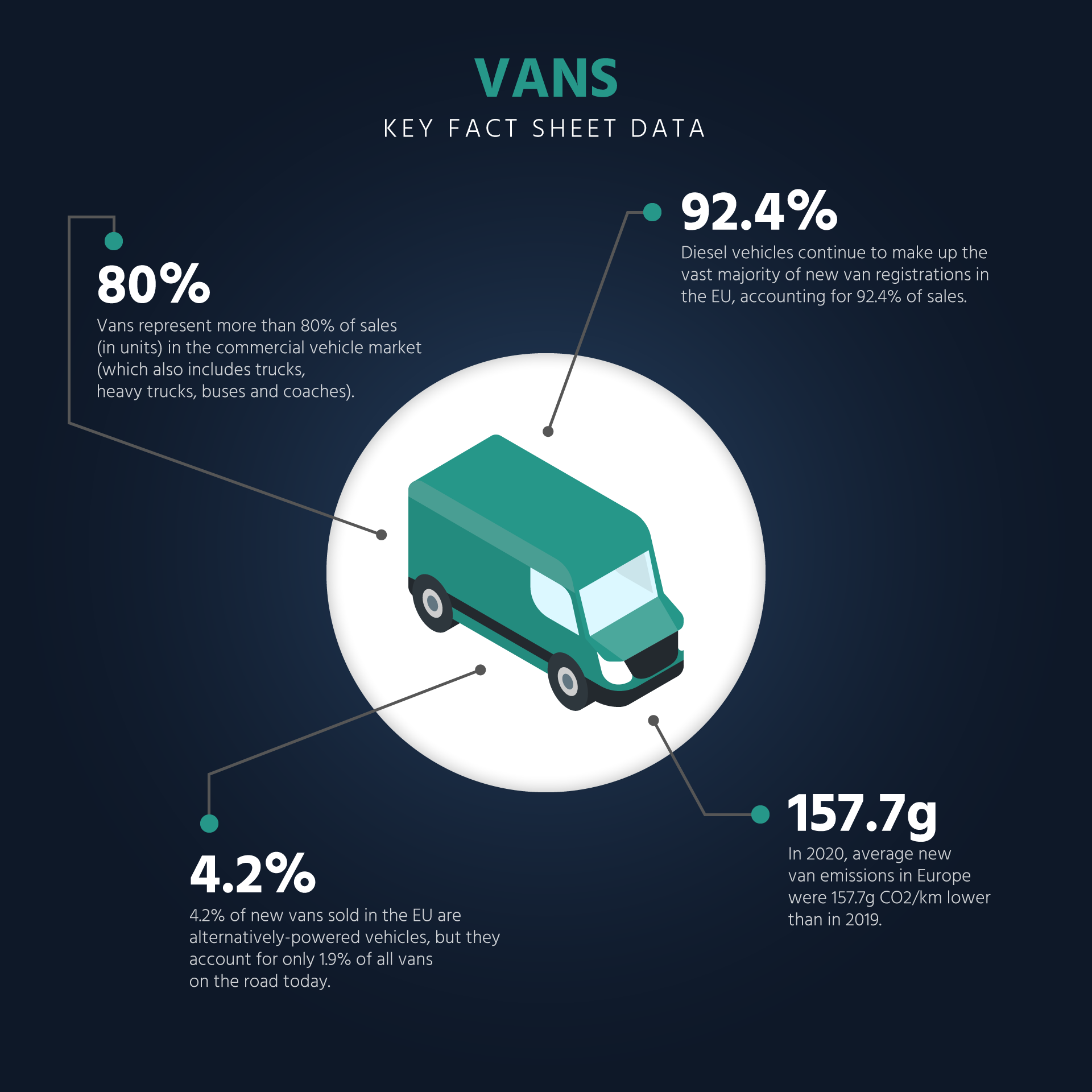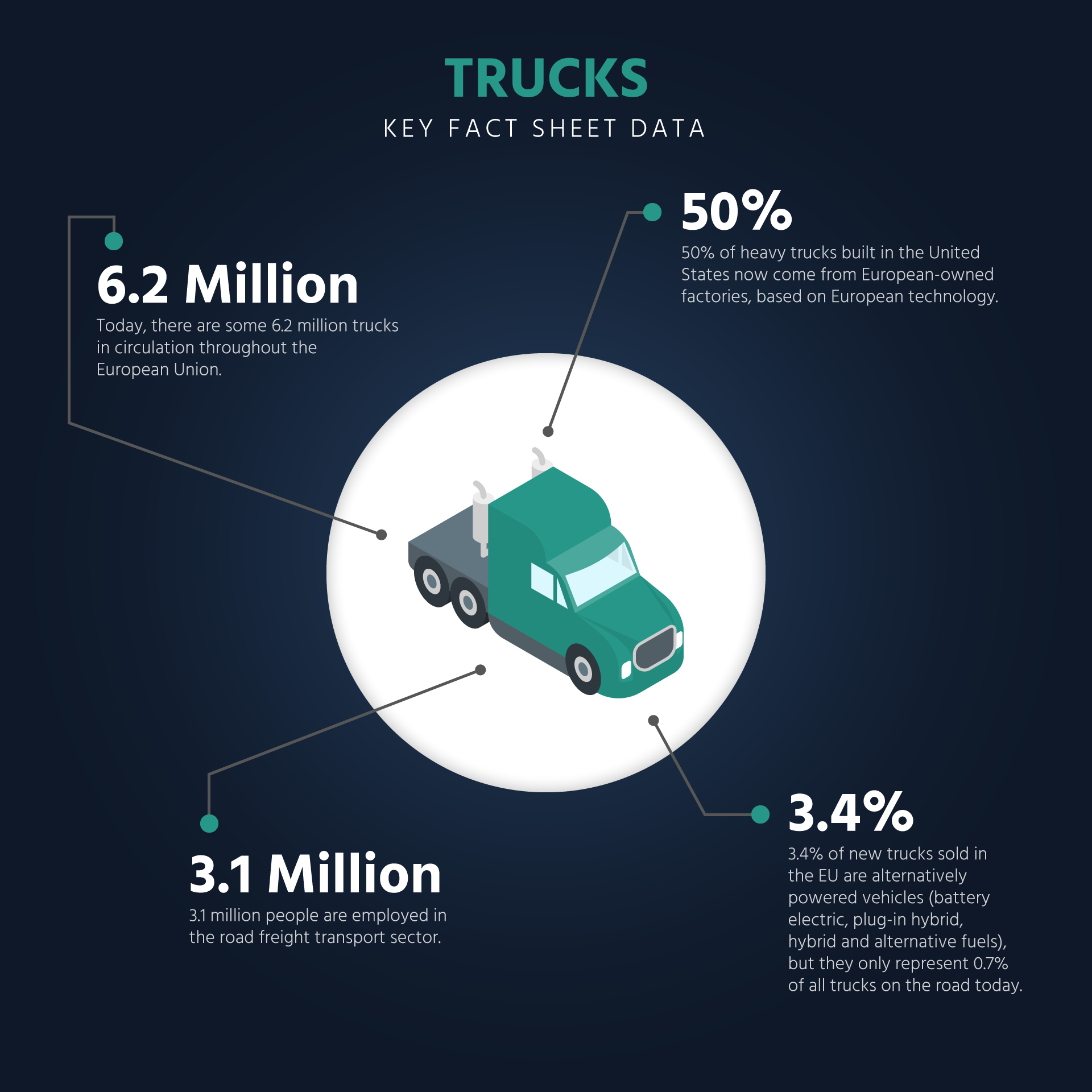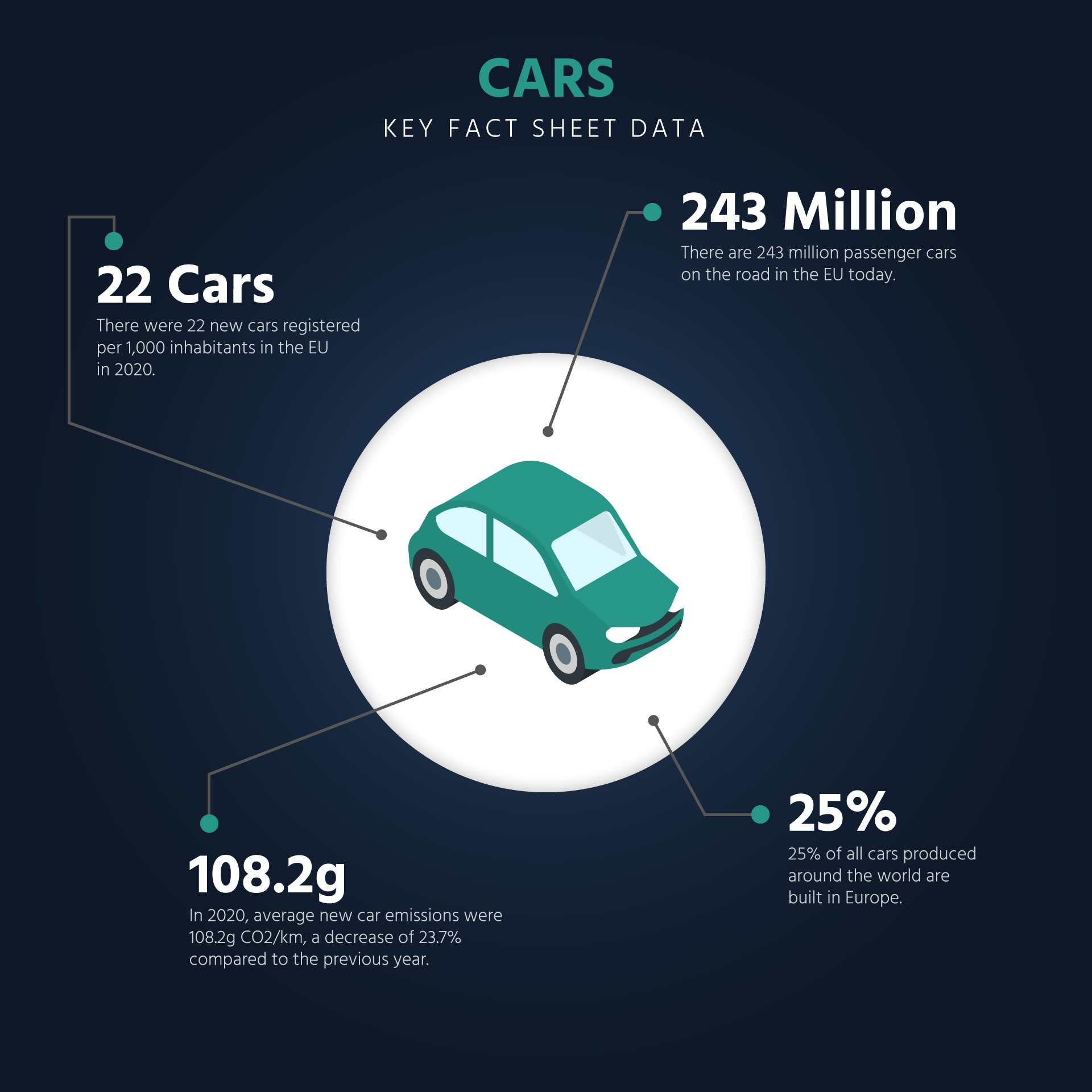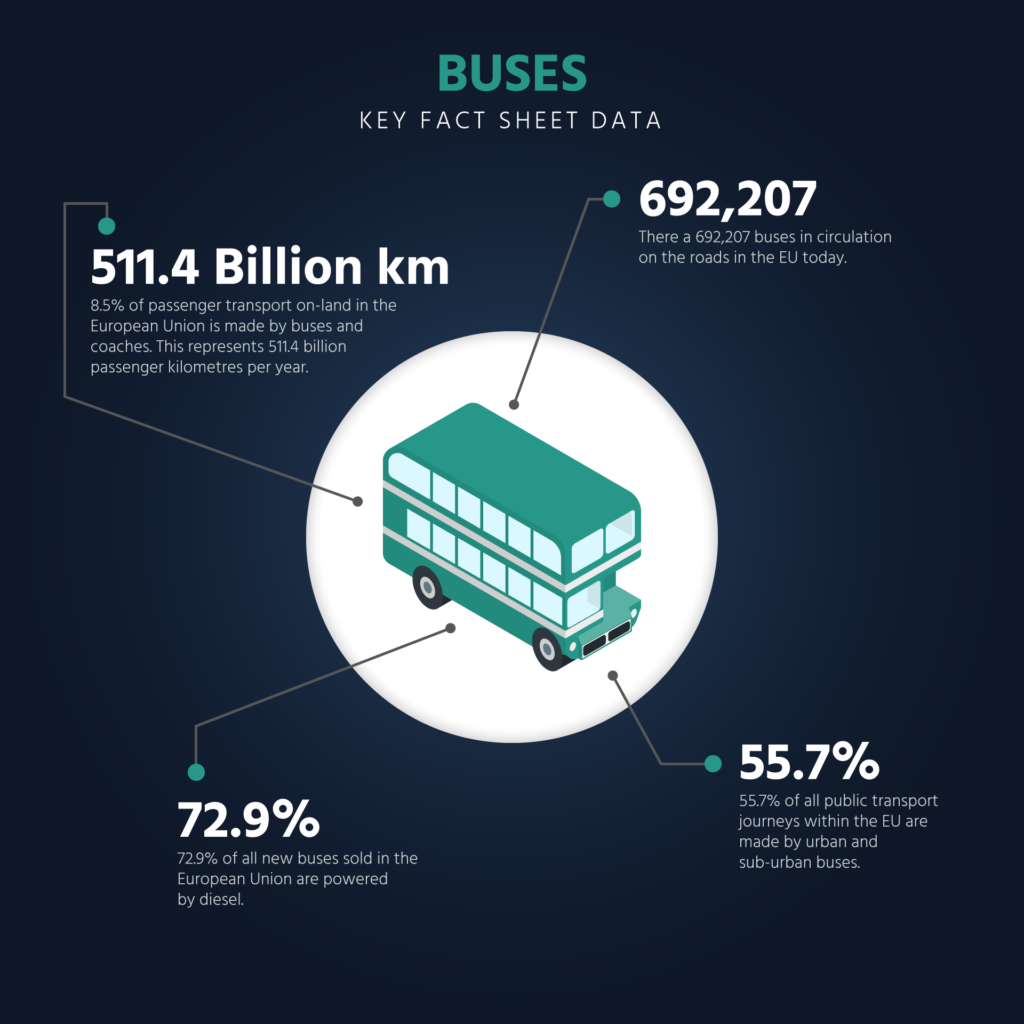The vehicle fact sheets, published at the end of 2021 by ACEA (European Automobile Manufacturers Association), highlight some key data in relation to different vehicle categories.
Specifically, these fact sheets look at vans, trucks, cars and buses as they represent the most common modes of transport for both business and leisure throughout the European Union.
Below, we’ve summarised some of the key points about the vehicle types from each of their respective fact sheets and pulled out some of the key pieces of data for each vehicle type.
Vans
Vans are part of a category known as ‘light commercial vehicles’. In the European classification system, vans are defined as “motor vehicles with at least four wheels, used for the carriage of goods and having a maximum mass not exceeding 3.5 tonnes”.
Vans are largely used as business tools by small-medium sized companies, as they provide them the capability to deliver goods right to the door of their customers who are growing more expectant of fast, direct deliveries.
As tools to a business, the overall cost of ownership, including fuel consumption, price and maintenance costs, is incredibly important.

View the full Vans fact sheet here.
Trucks
In the European classification system, trucks are defined as “motor vehicles with at least four wheels, used for the carriage of goods”. To be classed as a ‘truck’, the vehicle must have a mass of more than 3.5 tonnes.
Trucks carry 73.1% of all freight transported over land in the European Union.
Trucks are the most flexible, responsive and economic mode of transport for the majority of goods and freight throughout the EU.
Most of our daily necessities, such as fresh food from the supermarket or corner shop, electronics and appliances, clothing, and so on, depend on trucks at some point in the distribution chain.
Many essential public services are delivered by trucks, such as garbage collection, fire and construction services.

View the full Trucks fact sheet here.
Cars
In the European classification system, cars are defined as “vehicles designed and constructed for the carriage of passengers and comprising no more than eight seats in addition to the driver’s seat, and having a maximum mass not exceeding 3.5 tonnes”.
Cars have provided modern society with the independence and freedom of mobility.
Over 70% of our journeys are made by car and transport the average European almost 12,000km every year.
Roughly half of all distance travelled by all vehicles in the EU is related to employment, making the role of cars, in supporting job-related mobility, incredibly important.

View the full Cars fact sheet here.
Buses
In the European classification system, buses and coaches are defined as “vehicles having at least four wheels, designed and constructed for the carriage of passengers, comprising more than eight seats in addition to the driver’s seat”
For many years, buses have been improving social inclusion, by providing access to education, employment and healthcare for all, including people on low incomes, those who don’t drive or the older generation and people living in more remote areas.
Buses are the most widely-used form of public transport in the EU, serving cities as well as suburban and rural areas. They are also the most cost-efficient and flexible form of public transport, requiring minimal investments to launch new lines or routes.

View the full Buses fact sheet here.
About ACEA:
The ACEA, unites Europe’s 16 major car, truck, van and bus makers.
The ACEA is the voice of the auto industry: a technological world leader and the backbone of the EU economy. Its members keep Europe on the move, providing diverse solutions for moving people and goods from A to B.






